My apologies for the lack of recent posts – I’m busy writing a second book. The blog will continue to be updated and, in the meantime, I’m very grateful for (and continue to welcome) guest contributions such as this. Matthew Evans, the principal author, works in communications within local government and has been assisted in research and writing by his father, Philip Evans, who has been a councillor on Aberconwy Borough and subsequently Conwy County Borough councils since 1976 and was twice Mayor of Llandudno, in 1983/4 and 2006/7. Many of the details of council minutes, personal details and recollections in this piece come from him. Most photographs (unless otherwise credited) have been kindly taken by the author’s sister, Kimberley Evans.
The context of Llandudno
Llandudno is today a popular resort town of 20,000 or so residents, known for its unique setting between the headlands of the Great and Little Ormes and its wealth of Victorian architecture. It is situated halfway along the coast of North Wales and lies around 45 minutes from Chester and under an hour and a half from the major cities of the North West of England; cities on which its economy has largely depended for 150 years.
It was the growth spurred by the Industrial Revolution and the income that generated – enabling people to enjoy leisure time and vacations – that led to the founding of the modern town in what had up until then been a small copper mining and farming village on the lower slopes of the Great Orme. This small village overlooked marginal grazing land on the isthmus separating the mountain from the mainland and which included the legendary marsh of Morfa Rhianedd. This marsh famously features in the ancient Welsh poem, The Tale of Taliesin, as the place from where the poet prophesied that a ‘monster’ would rise and ‘bring destruction on Maelgwyn Gwynedd’, the ancient King of Gwynedd. This marsh, now drained, is where much of modern-day Llandudno – and its council housing – is located.
The land around Llandudno had been owned by the Mostyn family of Mostyn Hall in Flintshire since around 1460, when Hywel ab Ieuan Fychan had married Margaret ferch Gruffydd, the heiress of the Gloddaeth estate, which lies about a mile outside the present town. Following this, the land around Llandudno lay largely undisturbed as an obscure and remote part of the Mostyn lands for hundreds of years. Only a few writers remarked on the place, most notably the travel writer Thomas Pennant, who in his ‘Tour in Wales’ of 1778 commented on the ‘beautiful half-moon bay of Llandudno’.
All this changed in 1848 when a Liverpool Surveyor, Owen Williams, stranded in Llandudno during a storm, saw the potential of the landscape and setting for a new resort for the newly wealthy middle classes. He shared his ideas with Lord Mostyn, who leapt at the idea, and the two set about building a planned model resort, and obtained the necessary Act of Parliament to start. Within 50 years, and greatly accelerated by the arrival of the railway in 1858, central Llandudno had become essentially the town we see today, with wide, well-planned streets incorporating all the architectural styles of the latter half of the 19th century. The original plan called for a formal grid of streets, where the height of any building was not allowed to exceed the width of the street. Perhaps mindful of the poor living conditions of the big cities, no court or basement dwellings were permitted and the plan stipulated that ‘the town that is to be shall resemble, as far as practicable, the country’.

All of these measures created an attractive, fashionable town that had many of the grandest hotels, shops and entertainment venues that the Victorian and Edwardian holidaymaker could find anywhere in the UK. But all of these pleasures depended on having a large working population close at hand to work in the hotel and hospitality industries. It was this need, both to ensure a large pool of labour, but also to house them in a way that befitted the town – and was in accordance with the rules of development – that led the local authorities in Llandudno to create the earliest social housing in Wales. A provision of housing for local need that has endured to the present day.
The first council houses
Llandudno can lay claim to having built the first council homes anywhere in Wales. The first 19 ‘workmen’s dwellings’ were built in Council Street, Llandudno in 1897 at a cost of £210 each.
The Minutes of Llandudno Urban District Council (UDC) give the background to the development and how events progressed, and they give an idea of the process involved in building council housing at this time. At a meeting of the Council held on June 17, 1896, the Minutes notes that members ‘Resolved that Part III of the Housing of the Working Classes Act 1890 be, and is hereby, adopted within the Urban District of Llandudno.’
The Local Government Board then held an enquiry in June 1896 to consider the Council’s request for approval to borrow money for the building of the homes. Construction was started in September 1896 and the Local Government Board queried why work had commenced prior to the loan sanction having been applied for. They required a fresh resolution to apply for the loan sanction.
This further resolution read: ‘That application be made to the Local Government Board for sanction to borrow £4357 for the purpose of carrying into effect Part 3 of the Housing of the Working Classes Act 1893 (sic) by the erection of 19 cottages in accordance with the plan and estimates prepared by the Surveyor and approved by the Council.’
In November 1896 the sanction was approved and the contractor was a Mr Hassell.
The scheme was not without its controversies however. The Minutes of the Workmen’s Dwelling Committee of February 22, 1897 record the Surveyor, E. Paley Stephenson, reporting on a series of accusations in the chamber from a Councillor John Owen, relating to the houses. The report states that Councillor Owen had clearly gone public on his criticisms and these comments were also printed in the Llandudno Directory and caused some outrage. The report and minutes note his concerns (all wording and punctuation as original):
They were as follows:-
- That the fire-places were of common bricks.
- That the floors were not concreted.
- That the beam filling in party walls and eaves was not done.
- That the roof is not water-tight, and that snow and rain would get through.
- That the doors were ‘made in Canada.’
- That the windows were bad and appeared as if ‘coming from the Transvaal.‘
The surveyor rejected or explained all these issues and noted there was ‘no liability on the contractor to get them [the doors] made in Llandudno, and they are good’. He seemed confused by the reference to windows from the Transvaal, observing: ‘though I do not know where they were made [they] are of fair workmanship’.
The Committee then paid a visit to see the claims for themselves and the next Committee Meeting of February 27 notes:
After a minute examination of the houses the Committee came to the conclusion they could not endorse the statements made by Mr. Councillor Owen, at the last meeting of the Council. On the contrary, they are of the opinion that the erections and workmanship contrasted very favourably with other property in Llandudno. Although inspected on a stormy day, after 12 hours almost incessant rain, the houses shewed no sign of rain having penetrated.
After this firm rejection of Councillor Owen’s criticisms, the Committee’s only other resolution that day was: ‘That the Council, as an experiment, be recommended to fit up ten of the dwellings with penny in the slot gas meters.’
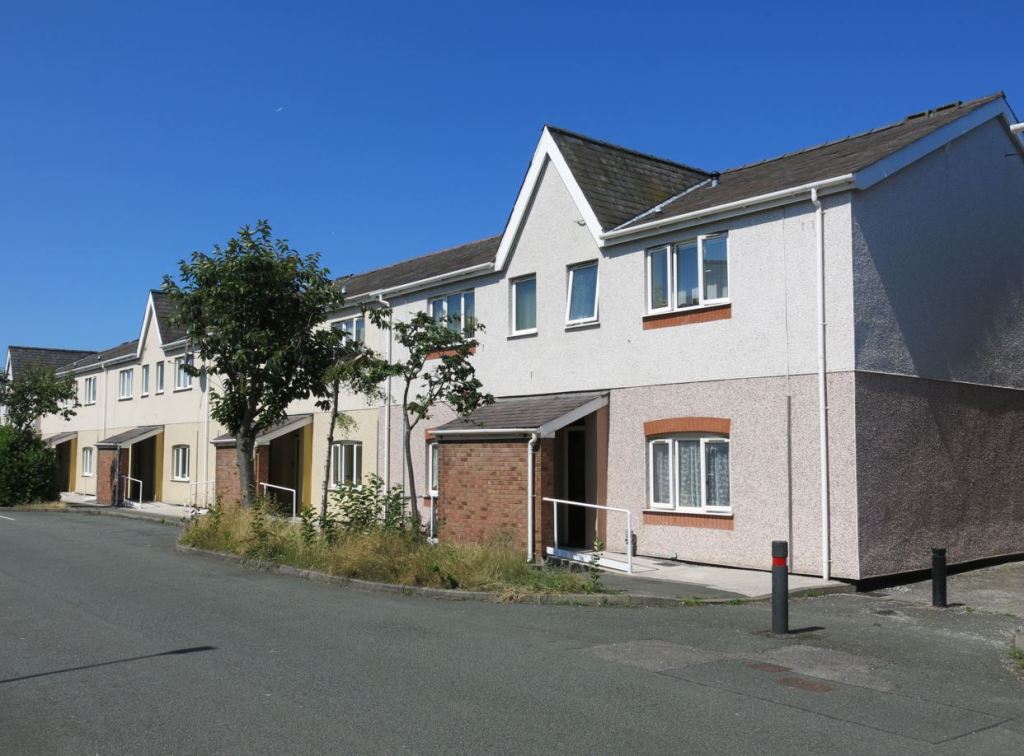
These first council properties were refurbished and converted into warden-controlled flats in the late 1970s. This involved re-rendering and each dwelling was converted into two flats, one accessed from the original front door of each property and the upper flat being accessed from the back, up a stairway. At that time the street was re-named Norman Road. The former name had become unpopular as the houses had declined over time and the houses on one side of the road had never, in fact, been council properties. However, the former name lives on in the western extension of the road, which is a light industrial area called Council Street West.
Despite the criticisms of the likes of Councillor Owen and the press reports of debates on the council, the Council Street scheme was just the start of social housing building as Llandudno looked towards the Edwardian era. On October 28, 1896, the Workmen’s Dwellings Committee dealt with negotiations to buy land for further housing from the Ecclesiastical Commissioners. Terms were subsequently offered by the Commission and accepted by the UDC to buy land for 69 cottages at a total cost of £13,661. This was a scheme in Alexandra Road, West Shore, but this part of the street was subsequently renamed as part of King’s Road.
On January 28, 1897, the Workmen’s Dwellings Committee notes a Surveyor was authorised to arrange for a memorial stone with the following wording to be fixed in a convenient part of the building: ‘Workmen’s Dwellings erected by the Urban District Council of Llandudno 1897’
In May 1900, the Surveyor put forward a further scheme for erection of 28 houses and in April 1902 tenders were presented for a further 28 houses in Alexandra Road.
Homes Fit for Heroes
The Housing and Town Planning Act of 1919, commonly known as the Addison Act after the Minister of Housing Christopher Addison, laid the foundation for the large rise in council housing the country saw after the First World War. This was part of the call for ‘Homes Fit for Heroes’ made by Prime Minister David Lloyd George towards the end of the war. Llandudno Urban District Council moved quickly into action and decided to build further houses in West Shore. Llandudno was perhaps further spurred into action by the fact that David Lloyd George was the local MP for Caernarfon Boroughs (of which Llandudno was part). The first section of King’s Road was completed in 1920, with a commemorative stone laid on 8th October 1920 by Dame Margaret Lloyd George, wife of the Prime Minister; and Mrs E. R. Woodhouse, wife of the Chairman of Llandudno UDC.

The building of new council housing continued throughout the 1920s and 30s mainly in the West Shore area, in Maesdu (where the majority of council housing would take place after the war) and up the Great Orme itself. Rather than large estates, council developments at this time were mainly one or two roads in size, such as the adjoining Lees Road and Knowles Road. These streets were named after the Conservative politician, philanthropist and supporter of social housing and the Guinness Trust, Sir Lees Knowles, who died in 1928. In 1926 and 1934 Marian Road and Marian Place were built alongside the railway line around the same time that the UDC constructed its new bridge over the tracks linking Deganwy and Llandudno and replacing the level crossing that had hampered communications in the peak holiday season when Llandudno could see over 100 hundred trains a day passing in and out. The bridge also gave its name to the Bridge Road estate built around the same time. In 1934 Cwm Place was built, a development that would later be surrounded by the Tre Creuddyn estate, but which when built was somewhat isolated from the urban area of the town. The full list of developments at this time – always referred to as ‘workmen’s dwellings’ in the council minutes – shows the almost continuous building activity that took place:
- 1920 King’s Road
- 1922/23 Dyffryn Road
- 1923 Mowbray Road
- 1924 Knowles Road & Trinity Avenue
- 1925 Knowles Road
- 1925 Marian Road
- 1926 Maesdu Road & Maesdu Place
- 1927 Lees Road, King’s Avenue, King’s Place
- 1929 Bridge Road
- 1930 Ty’n y Coed
- 1933 Llwynon Road
- 1934 Cwm Place 33 houses and 3 flats
- 1935 Cwm Place 16 houses and 16 flats
- 1934 Marian Place
- 1935 Maesdu Road
The architecture of this housing evolved over the interwar years. Given the difficult economic context of the immediate aftermath of the First World War, the housing of 1920 in King’s Road housing is plain and simple, semi-detached houses with flat fronted and pebbledash render. By the middle of the 1920s, as can be seen in the following images, the houses became larger. The author’s grandmother, known to all her 13 grandchildren by her surname as ‘Nanna Breeze’, lived in a typical 1923 house of this type in Mowbray Road, indicated in the picture, from around 1970, until her death in 2006.
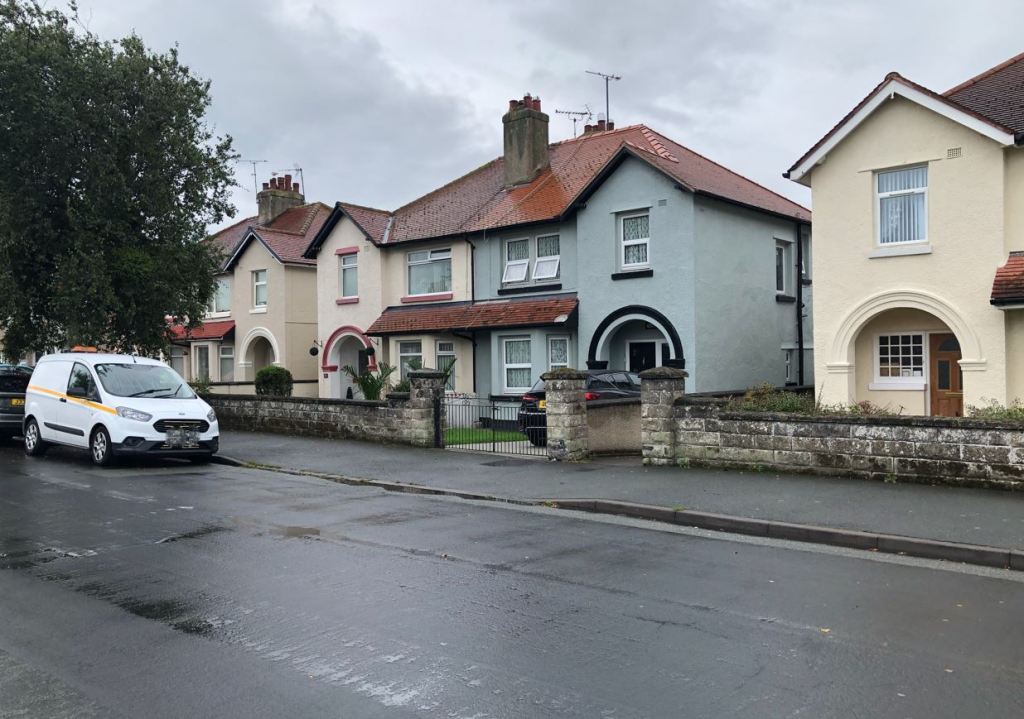
This house had a bay window with a recessed entrance porch, substantial lawned gardens front and back, three bedrooms, inside toilet and separate bathroom, kitchen, large hall with a staircase with 90-degree return, and a front parlour and separate back living room. I recall, even in the late 1980s when I was a child, the front room overlooking the road was reserved for special visitors and completely out of bounds for us children, even though visitors of sufficient quality for entry were few and far between. The back room, where all family life was conducted, faced south and used to become unbearably hot during the summer when, with our parents at work, my sister and I had to go and spend most days in the school holidays with our grandmother.
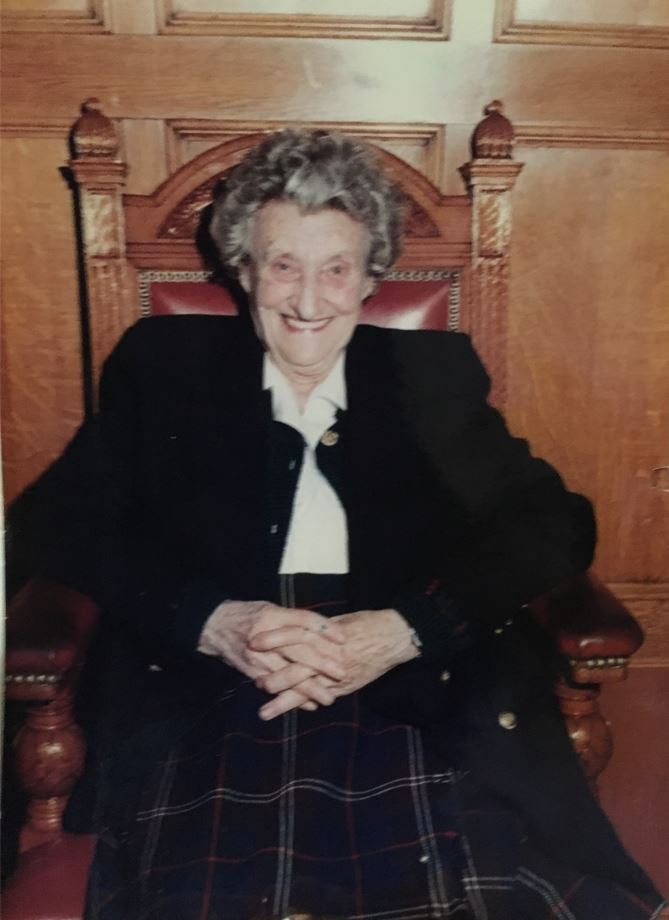
She was a cleaner in a seafront hotel by that point (well over 70 years of age), but the management allowed my sister and I to sit and play in the guest lounge while she completed her morning cleaning shift. In the afternoons, back at her house, she would naturally have a nap and I would then often sneak quietly into the cool, north-facing front room – unknown to her and in total contravention of the visitors-only rule – to escape the stifling heat in the back room. Sorry Nanna!
Such was the quality of this housing that my Nanna recalled having been told by several residents that the houses had been built by a private developer that had gone bankrupt and had to sell his privately built houses to the council for social housing. This was a myth, however, as the Council minutes are clear that this high-quality housing was all planned and built by the UDC itself for working people.
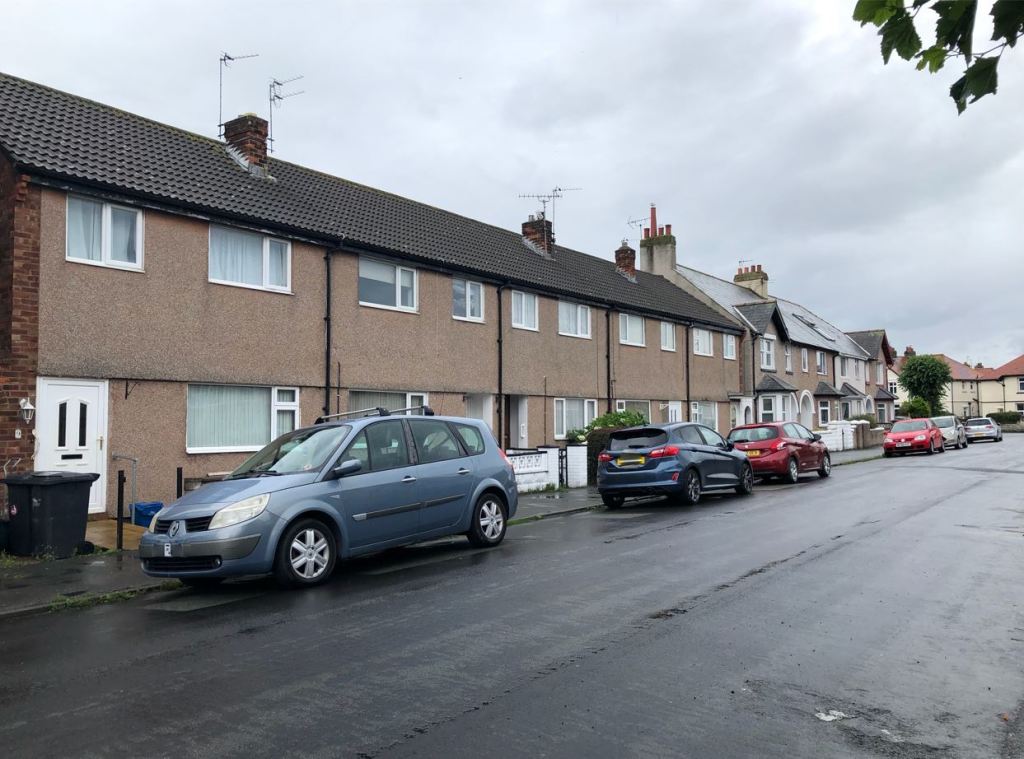
All of this shows that by the eve of the Second World War, Llandudno had made great strides in rehousing substantial numbers of people within good quality housing, with genuine commitment and a pioneering attitude from local councillors and officers. After the Second World War, the inevitable pressures of housing need and changing styles would mean that housing was less substantial and generous in style than before the war. The continuing story will be told in next weeks post.
You can find Matthew Evans on Twitter @MattEvans170





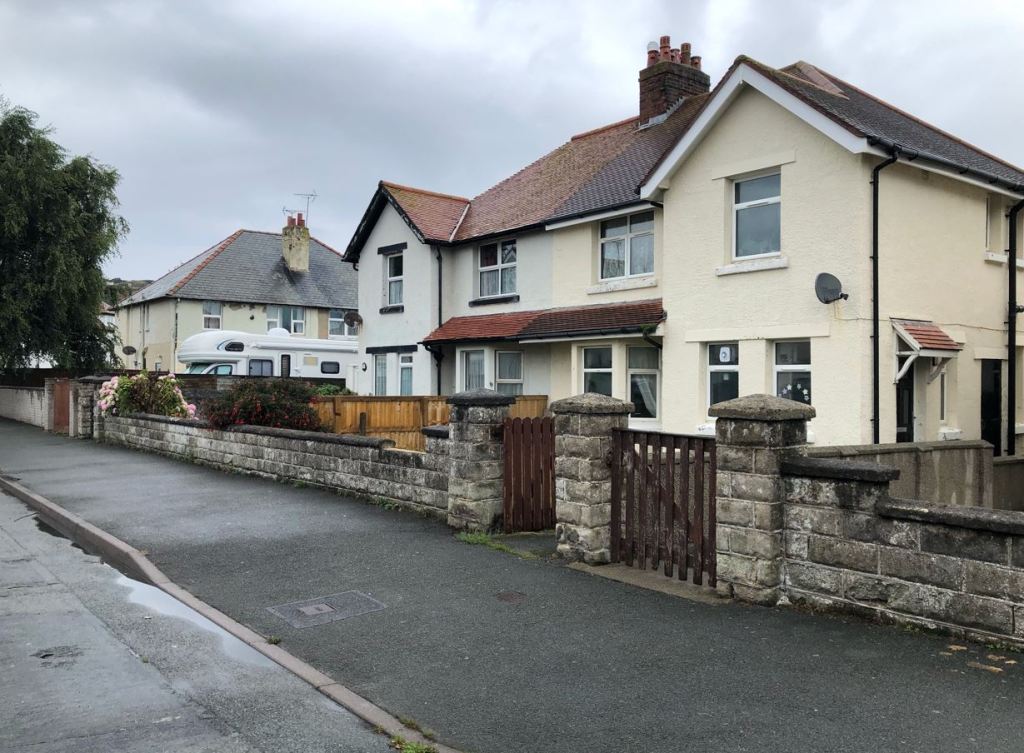
Dear John I was glad to receive another new post again; it’s been a while. And a lovely read, too: thanks to the Evans family, and to Nanna Breeze! Llandudno sounds like a place I want to visit. Best wishesFrederik
Hello Frederick – nice to hear from you and sorry not to have given you too much work recently! But this is a lovely post and Llandudno is well worth a visit. All the best, John
Hello Frederik, thank you for your kind comments on the blogpost, it was a pleasure to write something that’s been well-received. I will pass on your comments to my dad and sis. All the best, Matthew
Thank you, a very enjoyable rrad.
Tracy Newall
I am grateful for your kind comments on the post. I hope you enjoy part 2 as well. Matthew
Living in Wales, it’s great to see a Welsh centric Blog – had a great one at that. It’s chastening to see that even during the interwar years the council was focused on social housing, And making it of as good a quality as circumstances permitted. That last photograph of the 1960s in-fill is a salutary reminder of how not to do it.
Glad you enjoyed seeing a post with a Welsh angle. I hope you enjoy part 2 as well. Yes, it’s a shame that some of the post-war development wasn’t as solid as the pre-war work. All the best, Matthew
Very interesting article. Also liked the photo of the Town Hall which was built by my great uncle Luther Roberts
How interesting! What a monument to your family’s workmanship. It’s a lovely building. Glad you enjoyed reading the post. Best wishes, Matthew
Great read enjoy reading the history of Llandudno I lived in Kings Road the first fourteen years of my life remember it fondly fantastic childhood memories grandparents lived in Bridge Road still think of Llandudno as home fifty four later
Thanks for your kind comments. My mum’s family also lived on King’s Road in the early 50s (more on that in the next post), so I am sure our families must have know each other, at least by name. Like you I live away now, but Llandudno will always be home!
Nice article. I grew up on the Tre Creuddyn estate in the 1960s/70s. You might like to visit britainfromabove.org.uk and put Llandudno in the search bar. The pictures WAW050441 and WAW050443 are worth a look. The latter is the the Tre Creuddyn estate where we lived at 8 Ffordd Morfa. There were earlier photos (showing the development in progress) but I can’t seem to find them now.
Thanks for your comments. Stay tuned for the next post, where we will be looking at the Tre Creuddyn estate more. My mum’s family lived in Ffordd Dwyfor and on Conway Road in the three storey houses. My aunt lived in Ffordd Morfa though from the late 70s until the mid-80s.
Pingback: Council Housing in Llandudno, Part II Post-1945 | Municipal Dreams